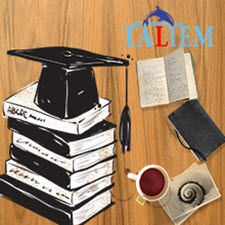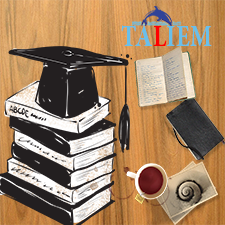توضیحات
ABSTRACT
Irrigated areas between Euphrates and Tigris rivers in Iraq suffer from salinity buildup in the root zone of corps. Agricultural drain water (ADW) from these areas is collected in a single main drain canal, in an annual flow rate of about 6 billion cubic meter. In the present work, a pilot-scale nanofiltration membranes unit was used to evaluate the feasibility of desalinating ADW from the main drain canal for further reuse. Bench scale experiments were conducted to determine the optimum anti-scale dosage values in the unit. These values were verified in a plate type laboratory scale NF membrane to visually monitor the onset of crystal appearance behavior. A method for calcium sulfate precipitation control is presented and an empirical correlation of anti-scale dosage as a function of concentration factor (CF) was obtained. A pilot-scale unit was used to investigate the performance of NF membrane. High rejection values for both cations and anions indicate that the use of NF membrane in desalinating ADW from the Iraqi main drain canal is promising. The treated drainage water is considered good for irrigation when classified according to Wilcox classification.
INTRODUCTION
Many agricultural parts of the word, especially in arid and semiarid regions, suffer from adverse effects of irrigation, such as water logging and soil salinity. Concurrently, fresh water resources continue to dwindle either from excessive use or from deterioration of water quality due to contamination . The agricultural sector is the largest user, and consumer, of water in Iraq, with its share exceeding 75% of the total gross demand for water . On a consumptive use basis (the water fraction that evapotranspires during use), the share of irrigation water is even higher at more than 80% . Future increase in overall irrigation supply will depend on changes in the (priorities) demands for the municipal and industrial sectors, development of new groundwater resources and measures to reduce the outflow (terminal drainage) from the Euphrates-Tigris system. Agricultural drainage water (ADW) is a complex mixture of dissolved and suspended organic and inorganic components as well as a wide variety of microorganisms . The feasibility of membranes for drainage water reclamation was first demonstrated in 1971 at Firebaugh, California . Since then, serious consideration has been given to membrane technology for reclamation and reuse of agricultural drainage water in the one of the largest agricultural centers of the word, the San Joaquin Valley, CA.
چکیده
مناطق روغنی بین فرات و رودخانه های تگریس در عراق از ایجاد شوری در منطقه ریشه سپاه رنج می برند. تخلیه آب کشاورزی (ADW) از این مناطق در یک کانال تخلیه اصلی جمع آوری شده است، در جریان جریان سالانه حدود 6 میلیارد متر مکعب. در این مقاله، یک مجرای غشایی نانوفیلتراسیون در آزمایشگاه برای ارزیابی امکان تخلیه ADW از کانال تخلیه اصلی برای استفاده مجدد استفاده شد. آزمایش های مقیاس محوطه ای برای تعیین مقادیر دوز مطلوب مقادیر در مقیاس واحد انجام شد. این مقادیر در یک آزمایشگاه نوع آزمایشگاهی NF غشاء به منظور بصری نظارت بر شروع ظاهر رفتار کریستال تایید شده است. یک روش برای کنترل بارش سولفات کلسیم ارائه شده است و یک همبستگی تجربی از دوز ضد مقیاس به عنوان عملکرد فاکتور تمرکز (CF) بدست آمده است. برای بررسی عملکرد غشای NF، یک واحد آزمایشی استفاده شد. مقادیر بازدارندگی بالا برای هر دو کاتیاسیون و آنیون نشان می دهد که استفاده از غشا NF در دفع زباله ADW از کانال تخلیه اصلی عراق امیدوار کننده است. آب آشامیدنی تصفیه شده در هنگام طبقه بندي طبق طبقه بندی ویلکاکس مناسب است.
مقدمه
بسیاری از بخش های کشاورزی این کلمه، به خصوص در مناطق خشک و نیمه خشک، از اثرات نامطلوب آبیاری، مانند ورود به سیستم آب و شوری خاک رنج می برند. همزمان، منابع آب شیرین همچنان از مصرف بیش از حد و یا از بین رفتن کیفیت آب به علت آلودگی ادامه می یابد. بخش کشاورزی بزرگترین مصرف کننده و مصرف کننده آب در عراق است و سهم آن بیش از 75 درصد کل تقاضای ناخالص آب است. با استفاده از مواد مصرفی (کسر آب که در هنگام استفاده تبخیر می شود)، سهم آب آبیاری بیش از 80 درصد بیشتر است. افزایش آینده در کل عرضه آبیاری بستگی به تغییرات (اولویت ها) تقاضا برای بخش های شهری و صنعتی، توسعه منابع آب زیرزمینی جدید و اقدامات برای کاهش خروج (ترمینال زهکشی) از سیستم فرات-تگری است. آب آشامیدنی کشاورزی (ADW) یک ترکیب پیچیده از اجزای آلی و معدنی حل شده و معلق و همچنین طیف گسترده ای از میکروارگانیسم ها است. امکان پذیری غشاها برای احیاء آب های زهکشی برای اولین بار در سال 1971 در فریبوا، کالیفرنیا، به نمایش گذاشته شد. از آن به بعد، توجه جدی به تکنولوژی غشایی برای احیاء و استفاده مجدد از آب زهکشی کشاورزی در یکی از بزرگترین مراکز کشاورزی کلمه دره سان جویکین، CA انجام شده است.
Year: 2013
Publisher : Journal of Membrane and Separation Technology
By : Mohammad F. Abid , Saadi K. Al-Naseri and Samirra N. Abdullah
File Information: English Language/ 10 Page / size: 794 KB
Only site members can download free of charge after registering and adding to the cart
سال : 1392
ناشر : مجله فن آوری غشا و جداسازی
کاری از : محمد افعال عبید، سعدی ک. النصری و سمیرا ناصر عبدالله
اطلاعات فایل : زبان انگلیسی / 10 صفحه / حجم : KB 794


![Reuse of Iraqi Agricultural Drainage Water Using Nanofiltration[taliem.ir]](https://taliem.ir/wp-content/uploads/Reuse-of-Iraqi-Agricultural-Drainage-Water-Using-Nanofiltrationtaliem.ir_-3.jpg)


![Evaluating the influence of physical, economic and managerial factors on[taliem.ir]](https://taliem.ir/wp-content/uploads/Evaluating-the-influence-of-physical-economic-and-managerial-factors-ontaliem.ir_.jpg)

![Deploying Wireless Sensor Networks with[taliem.ir]](https://taliem.ir/wp-content/uploads/Deploying-Wireless-Sensor-Networks-withtaliem.ir_-150x150.jpg)
![Inelastic large deflection analysis of structural steel members under cyclic loading[taliem.ir]](https://taliem.ir/wp-content/uploads/Inelastic-large-deflection-analysis-of-structural-steel-members-under-cyclic-loadingtaliem.ir_-150x150.jpg)
نقد و بررسیها
هنوز بررسیای ثبت نشده است.